Why Modern Sellers Need Old-School Discipline too
2 min read


Benny Fluman (CEO)
Match B2B helps companies grow by turning smart data into real business relationships. We use data, strategy, and creativity to generate quality leads and build long-term connections in global B2B markets.
In 2025, we’re surrounded by AI-driven sales enablement, SDR automation, and intent data dashboards. But Brian’s lesson still holds: most sellers don’t need more tech. They need more time in front of customers.
The average B2B salesperson still spends only 90 minutes per day doing high-leverage sales activities — prospecting, presenting, and closing. The rest? Warming up, admin, Slack, coffee, and scrolling.
Here’s what elite sellers do differently:
1. Track Your Real Sales Hours
Use a stopwatch. Literally. Log actual time spent in selling conversations. You’ll be shocked.
When one B2B firm tried this, they discovered their "full-time" reps were spending only 90 minutes/day with clients. They doubled it to 3 hours — and revenue rose 30% in a year, during a recession.
2. Think in Hourly ROI, Not Monthly Targets
Top 10% earners think in hourly income. Ask:
“What is the most valuable activity I can do this hour?”
You’ll quickly see the ROI difference between pipeline work and procrastination.
3. Master the Law of Three
There are only 3 actions that generate 90% of sales outcomes:
Prospecting – finding qualified leads
Presenting – conducting tailored sales conversations
Closing – asking for commitment and guiding the next step
Buyers don’t want to be pitched — they want to be understood.
4. Stop Talking. Start Asking.
Most salespeople default to the “blah blah blah” pitch. But top sellers ask great questions — just like a doctor:
Step 1: Examine – uncover pain, problems, priorities
Step 2: Diagnose – clarify what’s really going on
Step 3: Prescribe – offer a solution only after steps 1 and 2
Everything else is support.
5. Use the “Agenda Close”
Top sellers pre-frame conversations with an agenda:
This builds authority, reduces buyer resistance, and signals you're a pro — not a pitch artist.
“I know you’re busy — so I’ve outlined 7 quick questions. If there’s a fit, we’ll take it from there.”
6. Sell the Destination, Not the Plane
Buyers don’t care about your product. They care about the change it creates. Don’t sell them on how your solution works — show them the before-and-after picture.
95% of buying behavior is driven by the future outcome, not product features.
7. Collect "No"s Like They're Gold
Rejection isn’t failure. It’s a metric. A well-run B2B sales org should measure nos per day just as aggressively as SQLs.
In fact, one telemarketing team boosted results by celebrating whoever got the most rejections fastest. Productivity and morale skyrocketed.
8. Identify and Practice One Skill Relentlessly
Final Word
Sales isn’t about working harder. It’s about focusing relentlessly on what drives revenue — prospecting, presenting, and closing — and mastering each with intention.
That’s what turned Brian Tracy from a broke dishwasher into one of the world’s most respected sales experts.
And it can work for you too.
Success isn’t built on 100 tactics. It’s built on deliberate practice of one thing at a time.
Ask: “If I could master one skill this quarter to double my income, what would it be?” Then work on it until people start saying, “You’re great at that.”
Address
4/12 Gershon Sharshevski,
Mazkeret Batya, Israel


